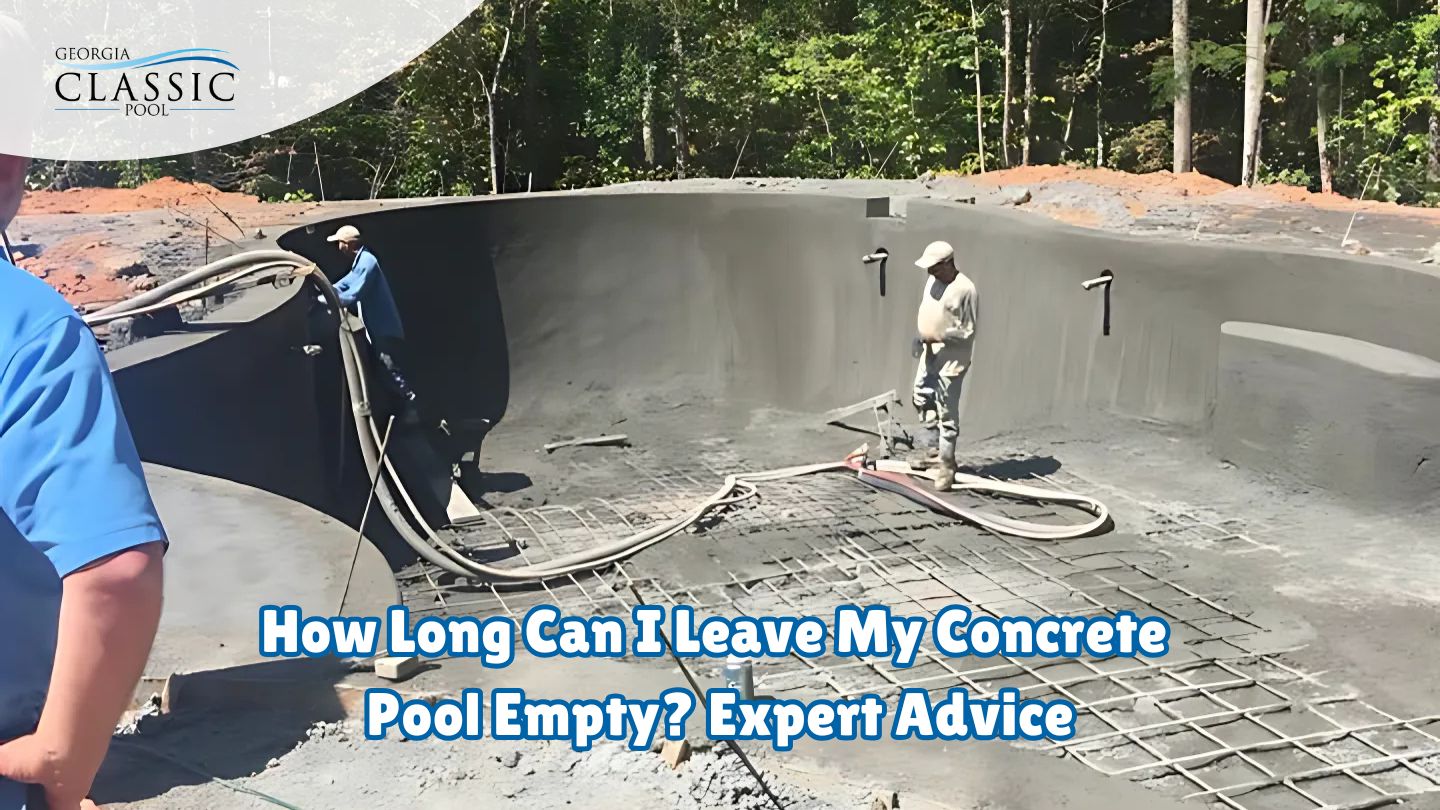If you’re wondering, “How long can I leave my concrete pool empty?” the answer is typically no longer than two weeks. Beyond this period, risks such as structural damage from hydrostatic pressure and cracks increase. Draining a pool should be considered a last resort only after all other maintenance options have been exhausted. This blog will guide you through understanding these risks and how to manage your pool safely.
Key Takeaways
- Leaving a concrete pool empty for more than two weeks risks structural damage due to hydrostatic pressure and potential cracks.
- Draining should ideally be done under mild weather conditions and preferably with professional supervision to minimize risks.
- Regular maintenance and partial draining can reduce the need for complete draining, helping to maintain the pool’s integrity.
- Most pools should be drained and refilled every 5-7 years to manage total dissolved solids (TDS) and prevent chemical imbalance.
Risks of Leaving a Concrete Pool Empty
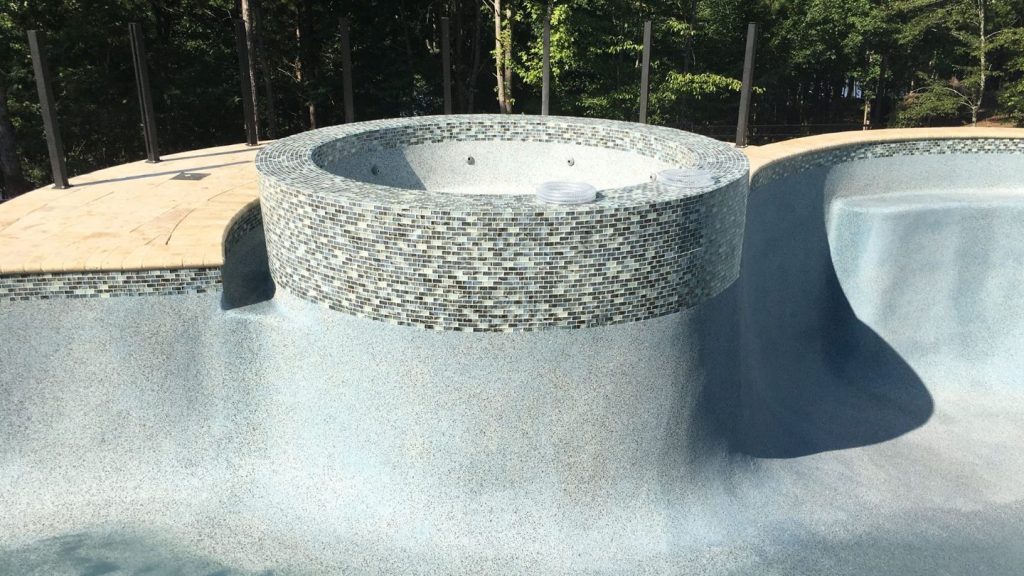
Allowing a concrete pool to sit vacant can severely undermine its structural strength. When a pool sits empty, it can lead to potential damage or structural issues, particularly due to hydrostatic pressure. It’s essential that draining is only performed when strictly required, given the substantial risk of damage it poses. Extended periods without water expose concrete pools to hydrostatic pressure risks, which could lead to their potential failure. Ideally, these pools should not be left empty for periods exceeding two weeks.
The act of draining a pool may also result in soil erosion, impacting not just the pool structure itself but also the adjacent landscaping. We will delve deeper into these dangers in the following subsections below.
Hydrostatic Pressure Threats
The absence of water in your pool can have adverse effects due to hydrostatic pressure. When a pool is empty, there’s no opposing force to balance the pressure accumulating under it, which may result in fissures forming within both the pool walls and floor. Particularly during periods of heavy rain, groundwater can impose intense pressure on the bottom surface of an empty concrete pool.
If you leave a swimming pool devoid of water for over seven days, you risk significant harm because surrounding groundwater will increase hydrostatic stress. This could eventually prompt considerable movement or fracture within the structure’s base.
Structural Cracks and Shifting
The absence of water’s counterbalancing weight significantly elevates the likelihood of structural complications. Leaving a pool devoid of water for more than seven days markedly intensifies the chances of enduring issues such as shifting and cracks forming.
Should a pool remain drained for prolonged durations, it can lead to concrete fissures and accelerate the degradation of its structure. These fractures have the potential to cause leaks and harm the foundation, which could necessitate expensive repairs. In comparison, vinyl liner pools can become damaged by exposure to the elements after being emptied, leading to significant damage such as cracking and loss of integrity, necessitating repairs and replacement of the liner.
Groundwater Intrusion
Intrusion of groundwater represents a significant hazard when your pool is devoid of water. An elevated water table may permeate and provoke the pool’s upward buoyancy, inflicting considerable harm and undermining its structural integrity. Leaving a pool drained for extended periods can exacerbate these risks, especially for fiberglass or vinyl-lined pools, which are more susceptible to damage from groundwater intrusion.
Draining your pool right after substantial rainfall can be particularly ill-advised due to increased levels of groundwater, which might intensify the issue. Rather than benefiting, improperly managed drainage of the intended pool water could actually result in Detrimental results.
Ideal Conditions for Draining a Pool
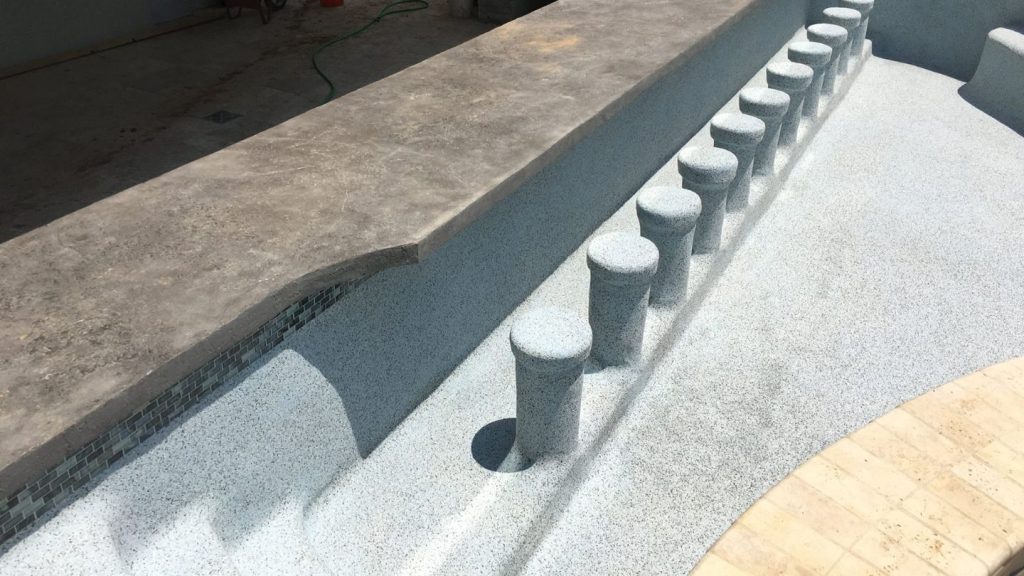
Sometimes, it is essential to drain a concrete pool, but this should only occur under the best circumstances in order to reduce potential hazards. Major maintenance needs or significant repairs that require no other resolution may make draining imperative. On average, based on different factors, such operations might be needed roughly every five to seven years.
However, keeping a liner pool empty for extended periods can lead to significant damage, requiring repairs or even replacement of the liner. The structural vulnerabilities of liner pools make them more susceptible to such issues compared to concrete or fiberglass pools.
Seeking advice from pool experts can help avoid accidents and damage to the structure. Professional input guarantees that the procedure of emptying your concrete pool is conducted securely and with proper knowledge.
Necessary Repairs
To conduct substantial repairs, such as mending considerable cracks or undertaking resurfacing, it is often necessary to drain the pool. For maintenance purposes, reducing the water level but still keeping some water in place can help preserve the structural integrity of the pool.
Regular use of pool chemicals is essential in pool maintenance, as it can prevent costly repairs and handle issues like algae blooms. Ensuring that the water level is properly regulated permits crucial maintenance tasks to be performed while safeguarding against any harm to the pool’s structure, thereby prolonging its longevity.
Seasonal Considerations
Draining a pool during the temperate seasons of fall or spring is ideal, as it reduces the risk posed by extreme weather conditions that can harm an empty pool.
It’s essential to factor in the climate when deciding to drain your pool. By steering clear of the severe winter cold and intense summer heat, you help shield your pool from unnecessary structural strain.
Professional Supervision
Seeking the advice of a pool service expert can guarantee that the draining process is conducted safely, avoiding any damage due to incorrect methods. These specialists are also equipped with knowledge about local rules and measures for safeguarding the environment.
By involving professionals in the pool drainage process, one can reduce hazards and ensure compliance with industry-recommended best practices.
How Long Can Your Pool Stay Empty?
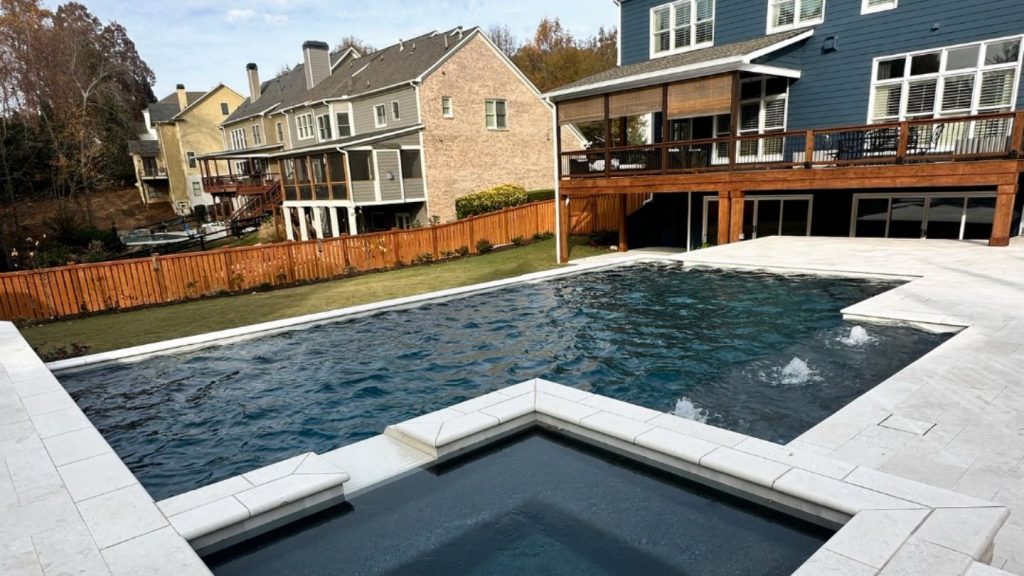
It is advisable to avoid leaving concrete pools drained for a duration exceeding two weeks, as this can lead to potential harm. The act of draining a pool subjects it to numerous dangers, rendering the process perilous.
Extended vacancies in concrete pools may precipitate structural complications and threaten their stability. It is essential to keep an eye on the state of an empty concrete pool and proceed with refilling when required.
Short-Term Drainage
For brief drainage, keep the pool empty for only a few days to a week, particularly in high groundwater areas. This short duration is generally safe. Pools should ideally remain empty for no longer than a week to minimize the risks of hydrostatic pressure and structural damage.
Extended Period Risks
Leaving a concrete pool empty for extended periods leads to significant risks due to unbalanced pressures and structural issues. Groundwater pressure increases without the opposing force of water, leading to instability. Extended draining can cause shifting and cracking of the pool floor. Monitoring temperature and humidity and consulting a pool professional can mitigate these risks.
Read more: Improving Pool Maintenance: The Paramount PV3 In-Floor System
Preventive Measures and Alternatives
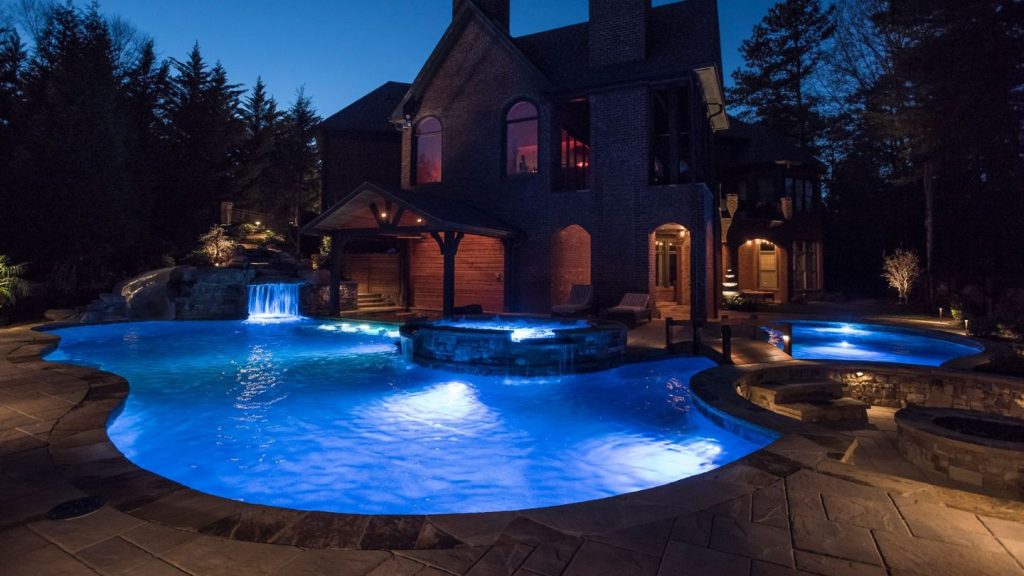
While sometimes necessary, draining a pool exposes it to environmental elements, leading to potential drying and cracking. Improper draining can cause irreversible damage, so consider preventive measures and alternatives. Instead of draining a green pool filled with algae, patience, and regular maintenance over two weeks can be effective. This approach is often cheaper and less damaging than refilling a 20,000-gallon pool.
Using Hydrostatic Relief Valves
Hydrostatic relief valves are designed to control the buildup of pressure when draining by discharging groundwater pressure and maintaining a balanced force equilibrium. These valves mitigate the risk of damage to structures by enabling the equalization of groundwater pressures, thereby safeguarding both the structure’s integrity and its durability throughout the drainage process.
Regular Maintenance
Maintaining consistent chemical levels and cleanliness can minimize the frequency of having to drain your pool. By keeping up with regular cleaning and ensuring chemicals are balanced, you prolong the periods between required draining sessions.
Conducting a partial drain of the pool is an effective way to control water levels while carrying out maintenance activities. This method not only renews the water but also assists in rectifying any issues with chemical imbalances without resorting to fully emptying the pool.
Partial Draining Techniques
Opting for a partial drain and refill is a more secure choice compared to completely draining, as it permits maintenance performance while reducing potential hazards. Leveraging either the main drain or the sump pump safeguards the pool’s structural integrity during necessary repairs and upkeep activities.
Importance of Professional Advice
Before making the decision to drain your pool, it is essential to consult with pool experts. These professionals can validate whether draining is required and offer their proficient advice on the most appropriate course of action. Obtaining a second opinion offers confirmation that draining your pool is indeed the correct choice. Insights from various professionals may support this guidance, ensuring you make an informed decision based on multiple expert perspectives.
Conclusion
Draining a concrete pool requires thoughtful deliberation, balancing the potential for structural damage with the need for maintenance or repairs. Consulting pool experts, considering seasonal factors, and understanding hydrostatic pressure are essential steps before making this decision.
Georgia Classic Pool, a family-owned business, excels in crafting custom pools and providing extensive maintenance services. We offer everything from surface skimming and filter cleaning to chemical balance checks, ensuring your pool stays in excellent condition. Additionally, we create beautiful outdoor living spaces, including custom-built cabanas and wooden decks.
Georgia Classic Pool is an excellent choice if you’re seeking a dependable pool builder in Alpharetta. By choosing our services, you can maintain your pool in excellent condition, preserving its structural integrity and prolonging its life. Adhering to these recommendations will ensure a stress-free pool ownership experience. Contact us today to start transforming your pool into a stunning oasis.

